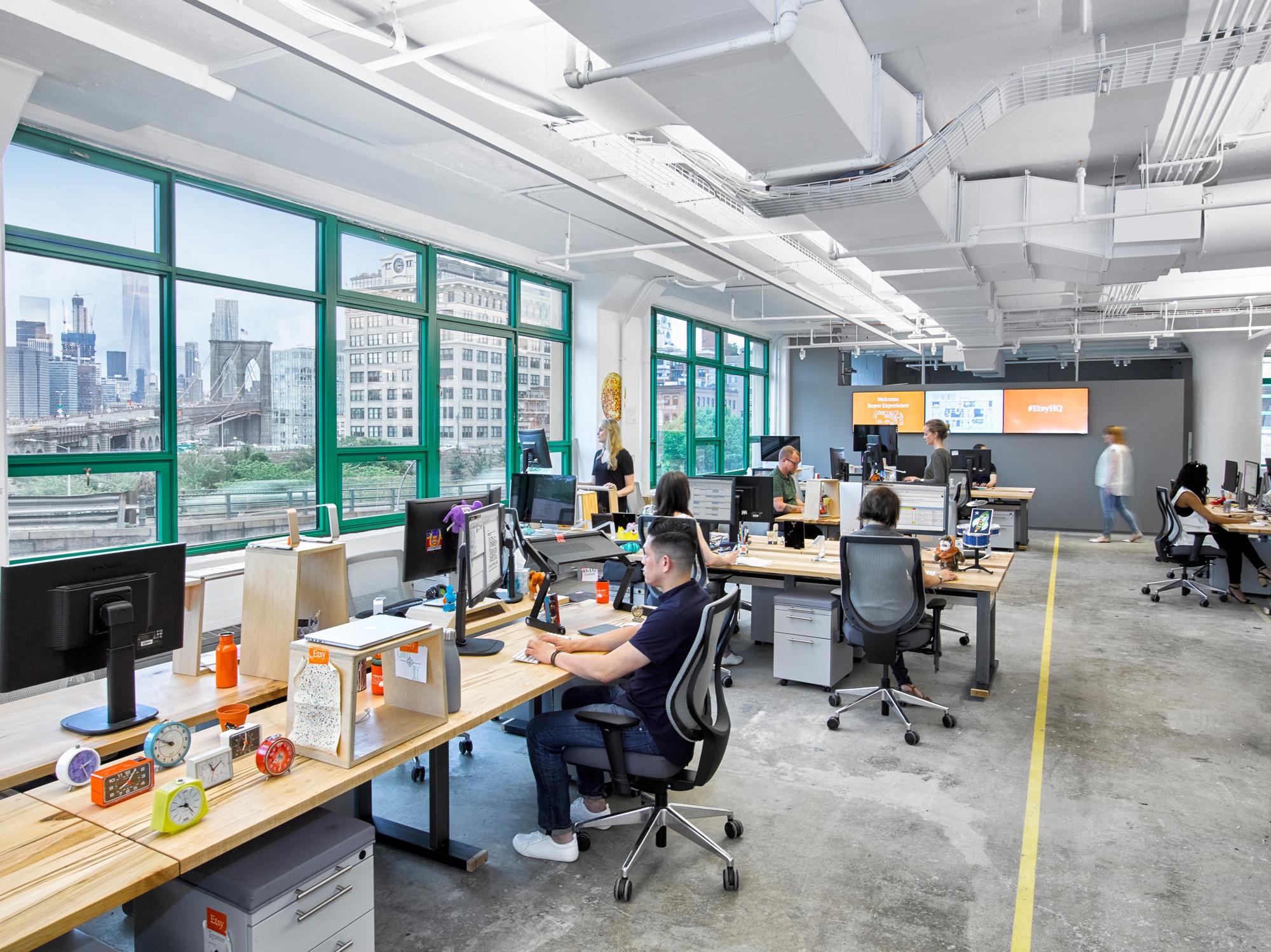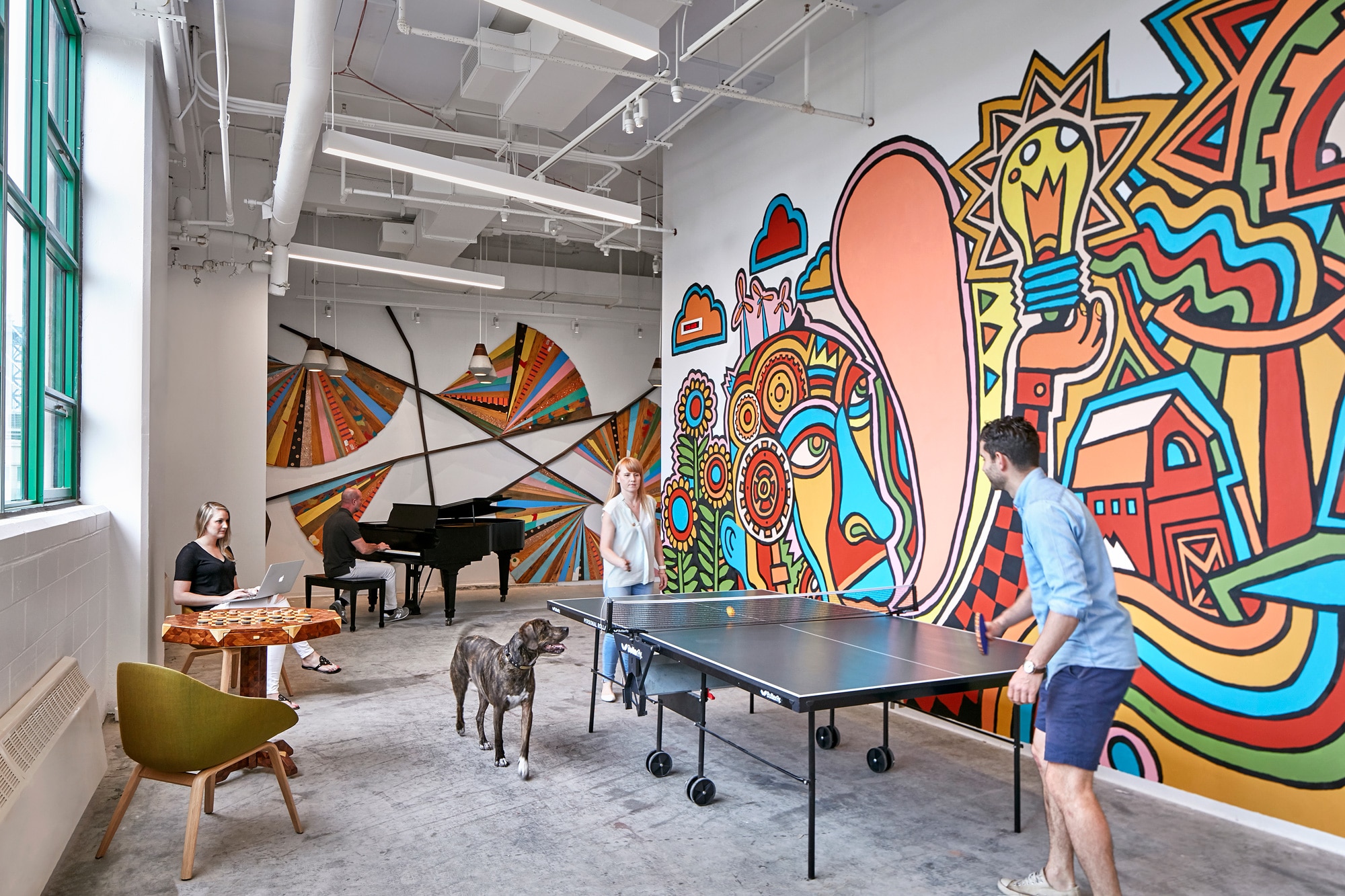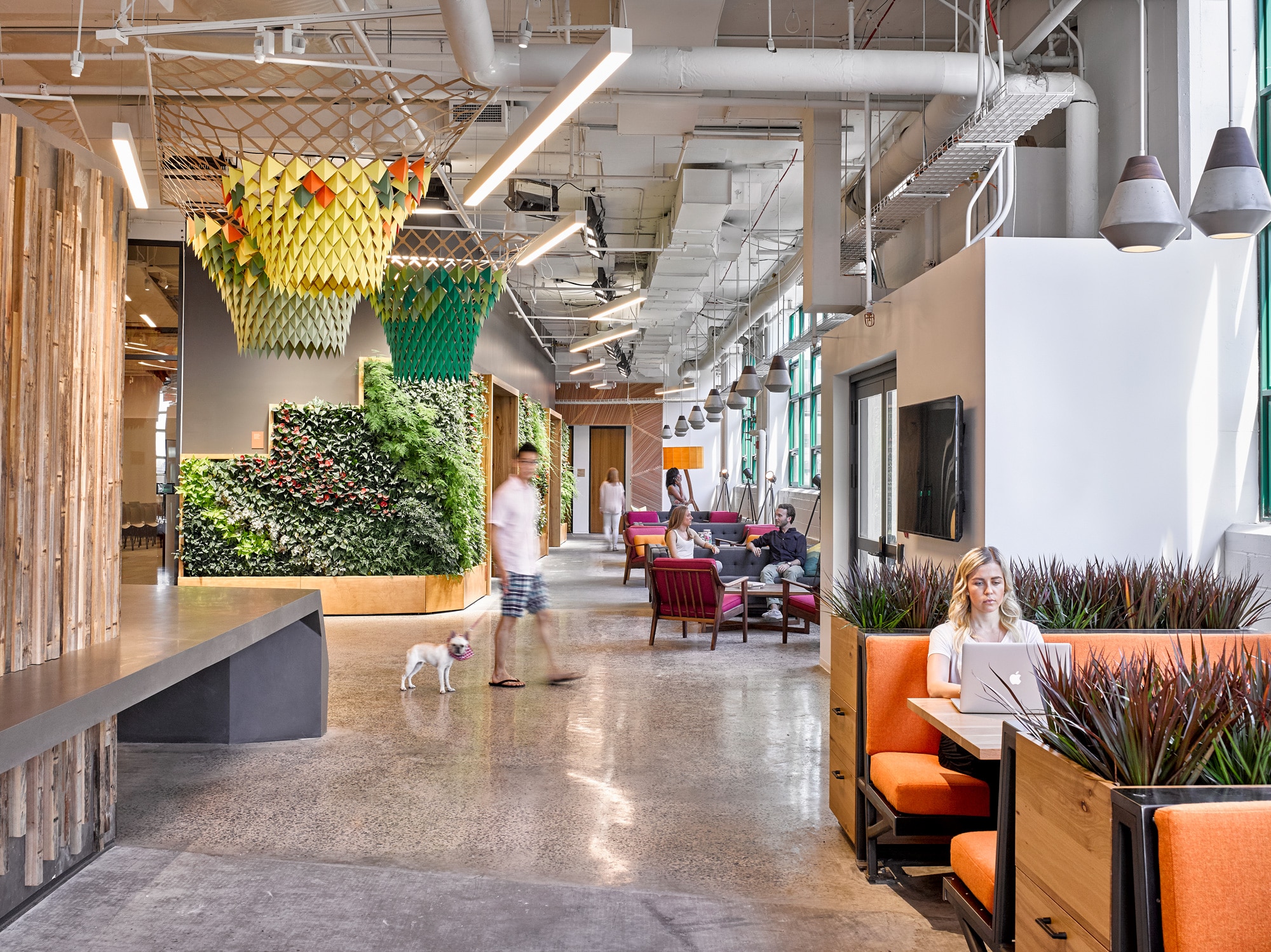Story at a glance:
- Inside the new Etsy workplace, where materials were vetted to avoid harmful or toxic chemicals listed on the Living Building Challenge Red List.
- The Gensler design team incorporated biophilia into the design with living green walls.
- Etsy is a certified B Corporation.
For David Briefel, sustainability director at renowned collaborative design firm Gensler, building a new, sustainable Etsy workspace fit seamlessly into both companies’ missions. Inspired by Etsy’s goal of reimagining “commerce in ways that build a more fulfilling and lasting world” and by direct input from Etsy employees, Gensler set about creating a space that would make waves.
The new, 200,000-square-foot headquarters in Brooklyn was an inspiring example from its inception. “The project embraced the Living Building Challenge benchmark as an opportunity to instigate change in the building industry and to set a new standard for sustainable construction and design,” Briefel says.

Etsy employees work in a creative environment that includes inspiring biophilic design. Photo by Garrett Rowland
To do this, Gensler and Etsy made some groundbreaking choices—scrutinizing every material, installation method, and design choice and paying close attention to how Etsy interacted with the Brooklyn community. “All materials were vetted to avoid harmful or toxic chemicals (LBC Red List), and consultants were asked to disclose 100% of the products’ ingredients,” he says. In doing so the project team had to, effectively, “rewrite the specifications book for the more than 1,500 items used on the project.”
To stay true to Etsy’s mission of creating a space that celebrates makers and the narrative of materials, the design team brought in more than 750 maker pieces, including 600 handmade desks. Some of the contributing artists and producers included First Third, Socotra Studio, Jason Hernandez, and In.Sek Design.
Materials are complicated, and it’s challenging for designers to prioritize between local sourcing, transparency, toxicity, life cycle assessment, and corporate social responsibility, all while weighing the design intent, durability, and cost.
Biophilic design features also made their mark, providing a more direct connection with nature for employees and visitors with the best indoor plants (accessible from every seated space in the building), native planted landscaped terraces (created by landscape architect RGR), living interior walls, and custom green workspace dividers (by Greenery NYC)—all fed by a more than 3,000-gallon rainwater collection tank.

Photos by Garrett Rowland, Gensler
Although Etsy and Gensler made the authenticity and safety of the materials in this space paramount to the concept, they recognized the difficulty of materials sourcing for many designers and builders and wanted to take on that challenge to, in a sense, light the way for others.
“Materials are complicated, and it’s challenging for designers to prioritize between local sourcing, transparency, toxicity, life cycle assessment, and corporate social responsibility, all while weighing the design intent, durability, and cost. Even manufacturers that want to responsibly source are faced with a sea of third party certifications that require sustained investment to maintain,” Briefel says.
Employee health, both safeguarding it and providing opportunities to improve it, is a top priority. The building has storage for more than 100 bikes, a meditation and yoga room, and “dynamic planning principals that encourage movement throughout the space, up and down the daylit stairwells with views of the Brooklyn Bridge,” Briefel says.

Photos by Garrett Rowland
Quiet spaces were a popular request on employee surveys, so the new space provides plenty of opportunities for workers to move around and find their own niche in nearly any corner of the nine-story building.
Collaboration spaces, gender-neutral bathrooms, craft rooms, and small dining areas on each floor are just a few more perks of working for this certified B Corporation in its Brooklyn headquarters.
In the building’s “Eatsy” cafeteria, organic and locally sourced meals are served twice a week while digital scales on zero waste carts and open source waste tracking software help the company track energy usage by floor and from the building’s rooftop PV array.
It holds, not only Etsy, but also the entire design team, industry, and community partners to new standards of sustainable design.
Setting out to challenge the idea of the typical workspace was one of the biggest challenges for the design team, but their efforts paid off. At the time of certification, Etsy’s new headquarters was the largest LBC Materials Petal–certified space in the world and the first in New York City. “It holds, not only Etsy, but also the entire design team, industry, and community partners to new standards of sustainable design.”



